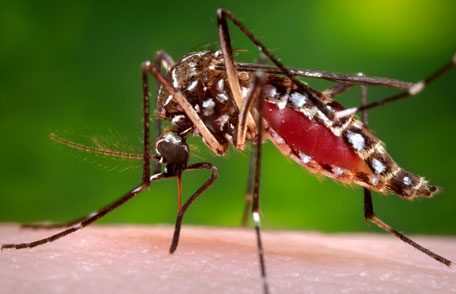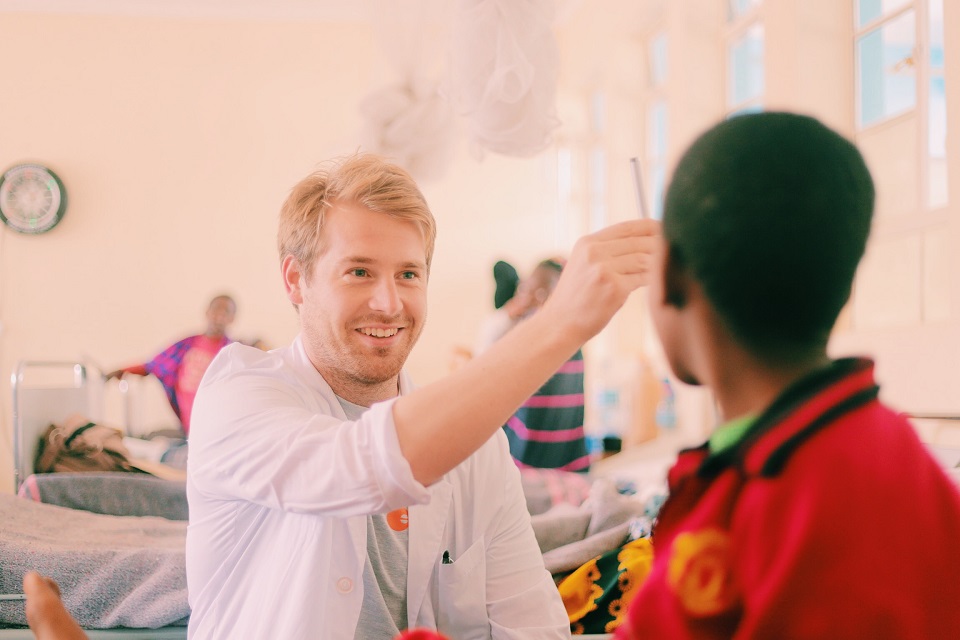 Visit Elective Africa website Visit Elective Africa website
|


|
|
|
| The Greatest Wealth is Health |
|
Welcome to this month’s newsletter. We pride in keeping you abreast with the most recent information and developments in the health sector we are glad to present to you our May’s newsletter with informative key areas as follows. May is the month the world marks “No Tobacco Day” and this year’s theme is calling on the plain packaging of cigarettes in a bid to reduce the attractiveness of tobacco products and increase the effectiveness of health warnings. Smoking is a dangerous lifestyle and a major public health concern and requires great sensitization to inform the people of the risks associated. Mosquitoes are a big disease burden to the society today, in this issue we have focused on the diseases caused by the mosquitoes, their signs and symptoms and the possible routes of prevention. In our third article we have focused on how innovations has revolutionized the healthcare system and how patients share health solutions through the use of the mobile technology and its effectiveness in delivering care to remote areas. Lastly is the power of environmental change in healthcare learning where we examine the benefits that accrue from changing the environment in the course of healthcare training. Happy New Month. Back to top |
| World No Tobacco Day |
 |
|
“We have to treat smoking as a major public health issue. We have to reduce the extent to which young people start smoking and one of the issues is the extent to which display of cigarettes, brands does draw young people into smoking in the first place,” Andrew Lansely This month the world will be marking No Tobacco Day and the theme will be plain packaging of cigarettes. World No Tobacco Day is celebrated annually in the month of May to highlight the risks associated with tobacco use. Partners and various healthcare stakeholders advocate for effective policies to reduce tobacco consumption. According to WHO plain packaging is an important demand reduction measure that reduces the attractiveness of tobacco products, restricts the use of tobacco packaging as a form of tobacco advertising and promotion, limits misleading labelling and increases the effectiveness of health warnings. Plain packaging of tobacco products refers to measures that restrict or prohibit the use of logos, colours, brand images or promotional information on packaging other than brand names and product names displayed in a standard colour and font Australia is the first country to introduce plain packaging of tobacco products followed by Ireland. Tobacco control measures in Australia include health warnings to cover at least 75% of the front of most tobacco packaging and 90% of the back of cigarette packaging, legislation to restrict internet advertising of tobacco products, stronger penalty for tobacco offences and a 25% tobacco excise duty. Ireland becomes the first country in Europe to ban branded cigarette packets. It is also the first country in the world to ban smoking in public places and impose a restriction upon smoking outdoors one should be within 3metres off any building. Tobacco harms nearly every organ of the body, causes many diseases and reduces the health of smokers in general. Quitting smoking lowers the risk of diseases and can add years to your life Smokers are at a greater risk for diseases that affect the heart and blood vessels, cancer, smoking while pregnant can lead to pregnancy related cases which include preterm, stillbirth, low birth weight, ectopic pregnancy and orofacial clefts in infants. Women past childbearing age who smoke have weaker bones than women who have never smoked, smoking affects the health of your teeth and gums and can cause tooth loss, it also causes rheumatoid arthritis amongst others. Kenya has not been left out in its efforts to control the use of tobacco. In 2014 it launched a national anti-smoking mass media campaign with a call to end tobacco use and to educate the public about the dangers of smoking. The campaign dabbed “Tobacco Kills-Quit Now” was launched as a result of findings from The Global Adult Tobacco Survey(GATS) which indicated that 1.7 million Kenyans smoke tobacco and 3.1 million are exposed to it through second hand smoke at home Quitting smoking is rather a marathon than a sprint. It is a one-time attempt, but a longer effort with great benefits. Back to top |
| Mosquitoes - The Disease Burden of The World |
 |
|
If you live or have ever lived in the tropics you probably would have encountered a ragingly buzzing winged insect – the mosquito - especially when it gets dark in the room. Sometimes you would swat them and when you don’t, bite you. Mosquitoes are known to cause nasty bites which may result to serious illnesses. Mosquitoes are the disease burdens of the world population and according to the American Mosquito Control Association (AMCA), over one million people worldwide die from mosquito-borne diseases every year. Mosquito bites can cause severe skin irritation and untold suffering to people in form of red bumps on skin as a result of allergic reactions of the skin with the insects’s saliva. Mosquitoes do not only cause suffering to humans but to animals as well. They transmit diseases to pets like cats, dogs and horses. Mosquitoes cause dog heartworm in cats and dogs and the West Nile virus (WNV) that affects birds and horses too. It is advisable to contact the doctor is a mosquito bite is associated with a more serious warning signs like headache, fever, and body aches. The World Health Organization (WHO) has raised a global alarm and launched surveillance on the outbreaks of Zika virus in Brazil, north America and parts of Africa as well as the Yellow Fever outbreak in Angola, causing fear and travel restrictions to people. Mosquitoes transmit protozoan, viral and filarial diseases to both humans and animals. They vector diseases like Malaria, yellow fever, Zika virus, Chikungunya, West Nile virus, Dog Heartworm and Dengue fever. A mosquito’s life span varies from region to region. On average, they live for two to three months but may be active all year-round in the tropics where it is warmer. Meaning most of the mosquito-disease burden in the tropical zone is higher than that of the rest of the world since these insects are active and cause harm for a longer period of time in a year. The most prudent way to prevent illnesses mosquitoes spread is to avoid their bites by wearing light-colored clothing to cover up, sleeping under treated nets, applying a mosquito repellant on your skin, and by keep water in pools and landscaping moving to counter their breeding grounds. Zika Virus Disease Zika Virus Disease is caused by a virus transmitted by Aedes aegypti mosquitoes. People with Zika virus can have symptoms which last between 2-7 days and which include mild fever, skin rash, conjunctivitis, muscle and joint pain and headache. There is no specific treatment or vaccine available to combat Zika. The best form of prevention from Zika is protection from mosquito bites. It is endemic in Americas, Africa, Asia and the Pacific. Recent research by the World Health organization (WHO) on Zika virus has linked it to the occurrence of fetal malfunctions and neurological disorders by having babies born with microcephaly in Brazil. Yellow Fever Yellow fever is an acute viral hemorrhagic disease transmitted by the aedes and haemogogus mosquitoes, endemic in tropical areas of Africa and Latin America. The virus incubates in the body for 3 to 6 days followed by infection which is characterized by fever, muscle pain, backaches, headache. Loss of appetite, shivers, nausea and vomiting. High level yellow fever causes severe symptoms like high fever, jaundice and bleeding, liver and liver failure and may be fatal. There is no specific treatment for yellow fever, doctors treat people infected symptomatically though the preventive vaccine works well by providing a life-long protection. Malaria Malaria is caused by a parasitic protozoan belonging to the plasmodium type transmitted by ab infected female Anopheles mosquito. It is the oldest known mosquito-borne illness that causes more than 600, 000 deaths worldwide annually. A malarial infection is characterized by shaking chills, high fever, profuse swearing, headache, nausea, vomiting, diarrhea, muscle pain, convulsions and coma. Malaria can be treated with the help of anti-malarial drugs, even when one is travelling. Researchers are working on a vaccine. Chikungunya Chikungunya is a viral disease transmitted to humans by the Asian Tiger (Aedes albopictus) and the Yellow Fever Mosquito (Aedes aegypti). The primary symptom is excruciating joint pain. It is rarely fatal though the symptoms may persist for weeks. The primary treatment is limited to pain medication for the comfort of the patient as there is no vaccine yet. The disease occurs in Asia, America, Africa and the Indian subcontinent. Dog Heartworm (Dirofilaria immitis) Dog heartworm (Dirofilaria immitis) is a serious and potentially fatal mosquito-borne disease affecting dogs. The disease is caused by a roundworm. A mosquito carrying the larvae of the worm through a bite and infect dogs, cats and foxes – and live in the heart and lungs causing multiple organ failure. Sometimes mosquitoes infected with the worm may bite humans but human are the ‘dead-end hosts as thy cannot develop clinical illness from Dog Heartworm infection. Dengue Dengue is a virus disease caused by a bite by both the Aedes aegypti and Aedes albopictus types of mosquitoes, in the Americas, Asia and Africa. Dengue symptoms are mild and can be mistaken for those of a common cold and flu though it can develop a more serious condition with high fever and bleeding in the nose and gum or easy bruising, what is referred to as the Dengue hemorrhagic fever. West Nile virus (WNV) West Nile virus (WNV) is a mosquito-borne flavivirus type of disease, that is cycled between birds and mosquitoes and transmitted to mammals (including horses) and man by infected mosquitoes. West Nile Fever can be characterized by fever, headache, tiredness and aches or a rash. A vaccine has been developed for horses and symptomatic and supportive treatment is offered as there is no vaccine yet for humans. It is advisable as a traveler to be vaccinated against diseases that may be prevalent in the areas of your expedition itinerary to avoid infection or transferring illnesses back home. It is also advisable to avoid mosquito bites and destroy their breeding grounds around our homes. Back to top |
| Innovations in Healthcare Revolutionalise How Patients Share Health Solutions |
 |
|
New technology and innovations in healthcare are slowly changing the way patients share and view healthcare solutions in Kenya. Kenya like other emerging countries in the world is faced with the reality of providing quality healthcare services to her people many of whom live in far-flung and hard-to-reach regions due to infrastructural challenges like good road networks in most rural areas. One vote of confidence for Kenya is how it has pioneered the mobile phone technology economy as witnessed in the successful money transfer through M-pesa; to supplement the banking system. Successive governments and regimes have invested heavily in communication technology as an enabler in connecting people and regions, even the remotest of areas. There is even a bigger opportunity for mobile services innovations in the realm of healthcare. The Harvard Business Review points out the notable differences between emerging markets and the developed world is the ubiquity of mobile phones in emerging markets. The mobile phone penetration rate in Kenya is at 88.1% Mobile phones are everywhere and Kenyans have come up with mobile health solutions applications like the mHealth, as a tool for delivering healthcare solutions to all. A subsector of eHealth, the Mobile health (mHealth) is the provision of health services and information via use of mobile phones and wireless technologies. Electronic health (eHealth) involves the integration of all information and knowledge sources in the delivery of healthcare though use of mobile phones and other hand-held devices like pagers and tabs. mHealth can help in managing both communicable and non-communicable disease, empower and outreach rural communities on their health wellbeing. The app can also be used monitor healthcare processes like calling out mothers with children to go for mass immunisation drives, monitoring expectant mothers, treatment adherence; all which are aimed at improving the health efficiency of the people. mHealth comes in handy in connecting patients and their care providers, keeping track of the health records and impact monitoring which is user-friendly and easy to acquire. It can be run on a simple phone using the messaging services without the use of internet. This smart app is used to extend medical care and medical solutions to Kenyan patients living in remote regions though a system of qualified doctors and a chain of non-trained-community doctors called community health volunteers or workers (CHV/Ws) who support doctors by reaching to the patient to provide healthcare solutions based on need. It helps healthcare professionals in diagnosing, treating and monitoring health conditions efficiently just at the touch of the key pad. For instance, the Ministry of Health sends regular health messages to community health workers in mapped out areas for mass immunisation of children under 5 years for polio or measles whenever there is an outbreak. The Ministry of Health also sends and receives messages alerting the country of an imminent health condition and mobilizes doctors to such areas to battle the health issue. Mobile phones are proving useful in disseminating rural and public health information. Uniquely, Kenyans call up ambulances and other health emergency services through the mHealth application or even request for a hospital referral services for patients in a critical condition. Patients can book appointments with the doctor or even ask question from a pool of healthcare professionals on any health condition and get quality and professional answers. mHealth innovation is proving to be a very effective, efficient and cheaper option in the healthcare solutions delivery by bridging the gap for healthcare services to the hard-to-reach and rural populations through technology. Back to top |
| The Power of Environmental Change in Healthcare Training |
 |
|
Environment is a major determinant of health and wellbeing hence it has a massive bearing in healthcare training. Moving from the normal environment especially in areas with proper supply of essential products for care provision to areas of resource constrain can be the beginning of acquisition of key skills. These skills are essential to success in the medical career; students contemplating for an elective/internship abroad and emerge with the following benefits. Creative thinking and decision making Doing something dissimilar can provide you with a frame into a side of healthcare about which you would rarely encounter, and therefore provide you with a greater range of tools in your professional life. Such tools would be greater decision making and creative thinking, coming up with rational decisions. People who have international experience are better problem solvers and display more creativity, research suggests. Changing environment especially in healthcare training is key because oftenly professionals in this field are confronted with critical decisions that may involve life and death. Peer and mentor learning Getting out of your axiomatic ‘comfort zone’ will help you develop character and an ability to deal with the innumerable conditions that your career could throw at you. Learning from examples of how others harvested heavily from the experience could be a first step. While on placement in a different environment you share with people who have evolved with the current health system to its current status and thus acquire skills of how they address scarcity of resources to deliver care to the populations. People skills are of great essence to succeed in a given area of profession, studying abroad and interacting with people of different culture has proven a great item in improving the interpersonal skills of a person. Beyond the norm Looking at an unusual aspect of medicine, such as faith or cultural practices, can help you develop an understanding that may assist career development. Diverse Patient backgrounds and the mechanics of running a health service are both vital concealed components to being a strong professional. The public health aspect which you are introduced to enables you understand the management of health system and the concept of organizational development. Availability of drugs, diagnostic tools of great efficacy and highly qualified professionals in various cadres make diagnosis and treatment a predictable activity that has a smooth flow. developing world such as Kenya and Tanzania is marred by great inadequacies that bring innovation to the whole picture of care, thus the professionals Understanding your field Working at innovative institutions or in exotic environments can show you a whole new side to your chosen career this can in turn help you develop an understanding of your field the various diversities that are inherent to it. This way you can further research and build knowledge in an identified area of knowledge. You will get to listen to patients which is the most important subset in healthcare training. You will get to hear their story, their pain and their fears. You will learn to be in the moment and block out distractions, which is what all patients hope their doctors will do. Relating with the patients will definitely build your ability to offer to grade care. Elective Africa gives one a chance to depart from the norm of their environment, to educative destinations and allows one to develop into a full professional capable of analyzing situations and coming up with rational solutions. Skills that are granted by change in environment is what elective Africa provides. Back to top |
|
|

 5 2016
5 2016